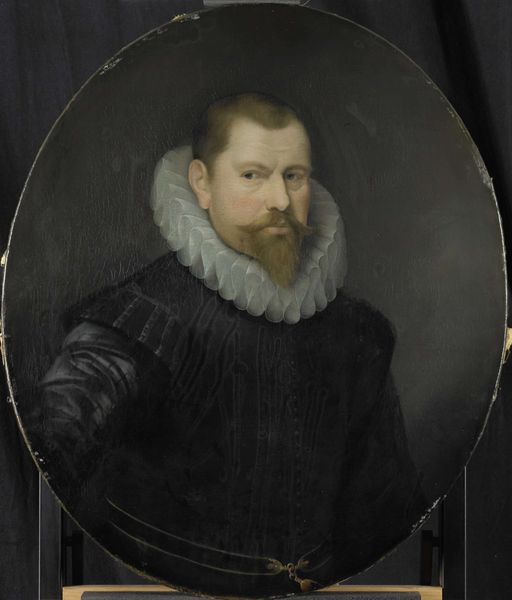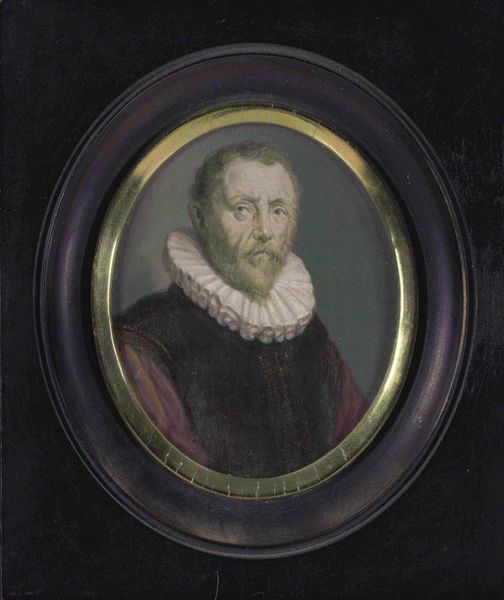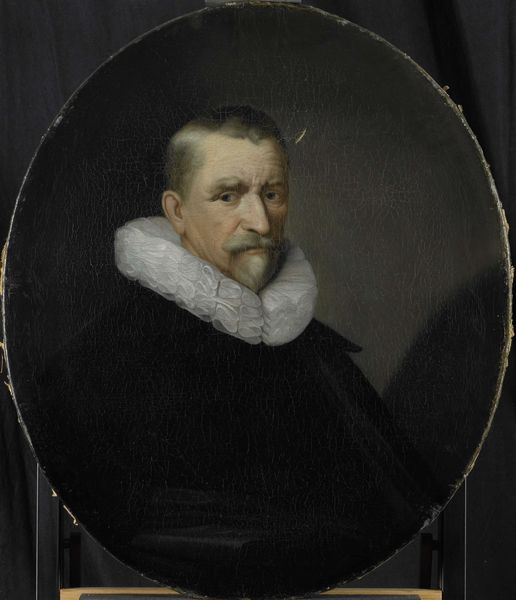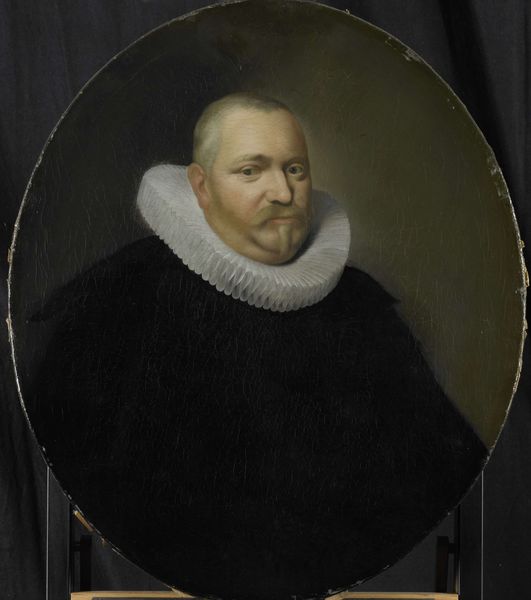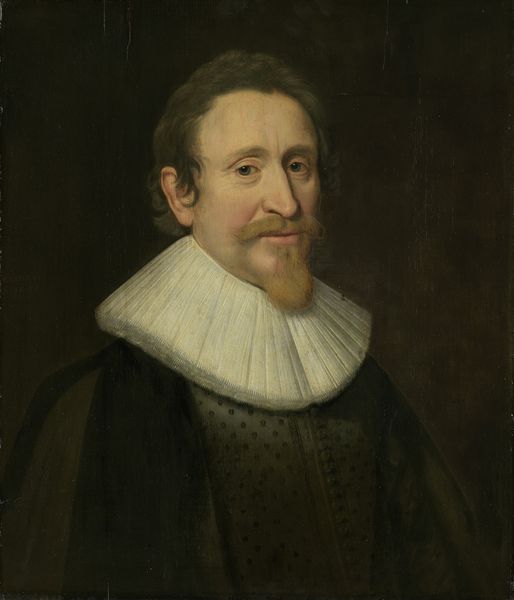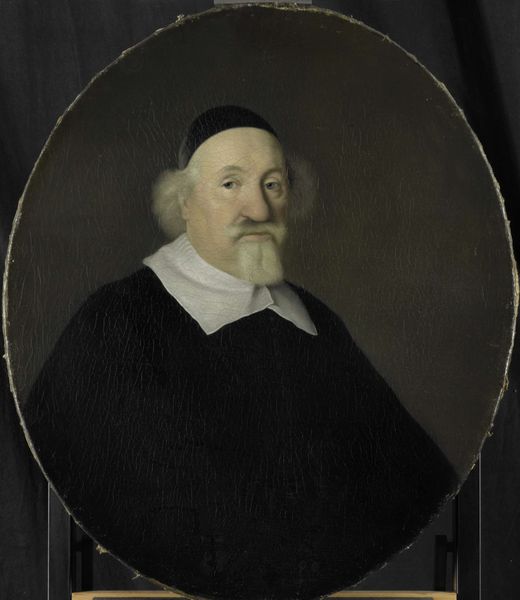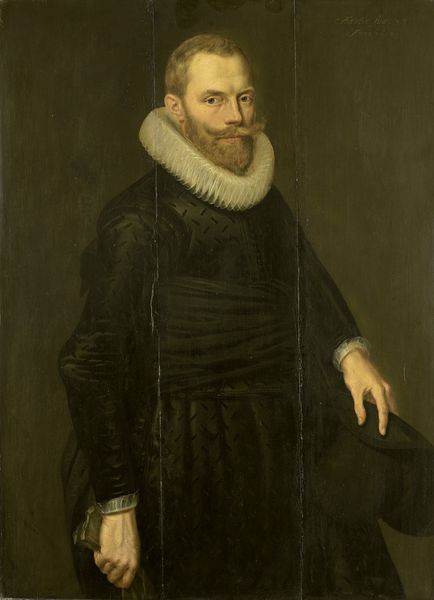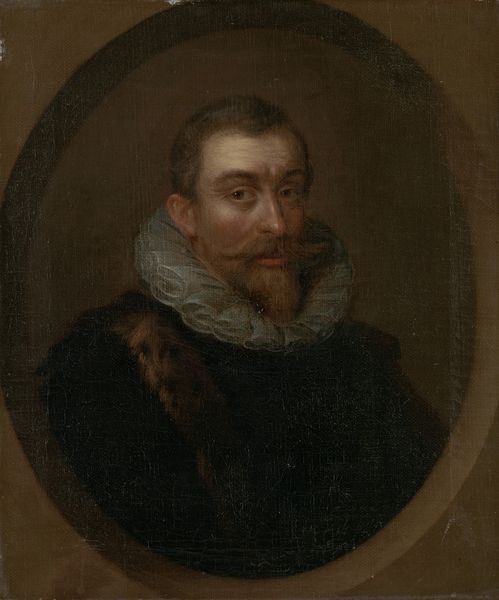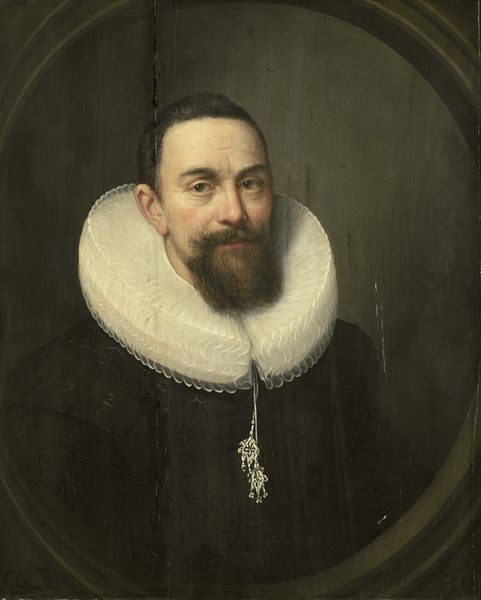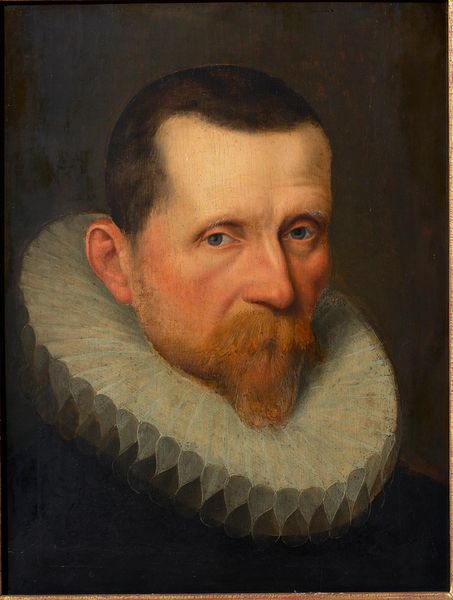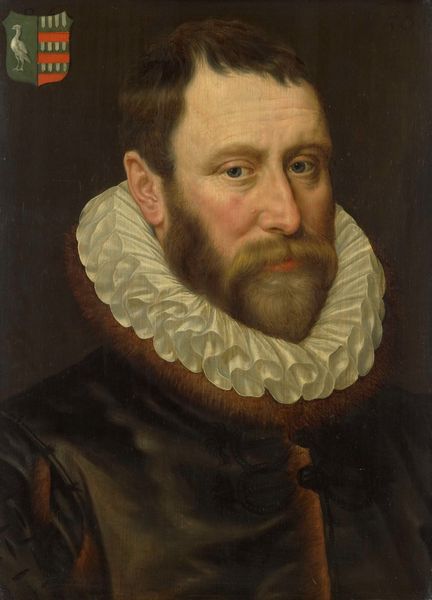
Portrait of Joost van Coulster, Director of the Rotterdam Chamber of the Dutch East India Company, elected 1630 1695 - 1722
0:00
0:00
painting, oil-paint
#
portrait
#
baroque
#
dutch-golden-age
#
painting
#
oil-paint
#
realism
Dimensions: height 82 cm, width 68 cm
Copyright: Rijks Museum: Open Domain
Pieter van der Werff painted this portrait of Joost van Coulster, director of the Dutch East India Company, sometime between 1665 and 1722. The severe black robe and starched white ruff epitomize the visual language of power and authority in the Dutch Golden Age. Consider the ruff, a seemingly simple collar. Its circular form echoes halos in religious art, suggesting a kind of secular sanctity. But its rigidity also speaks to the constraints of social status. We see echoes of this restrictive yet declarative collar across time, from the elaborate courtly attire of Renaissance Europe to contemporary fashion statements, each iteration carrying its own weight of cultural meaning. The somber palette and Coulster’s direct gaze create a sense of gravity, engaging viewers on a deep, subconscious level. This visual vocabulary—stark contrasts, controlled expression—reappears throughout history, adapted and reinterpreted. The symbols are reborn, and the collective memory embedded in them resonates anew.
Comments
No comments
Be the first to comment and join the conversation on the ultimate creative platform.

